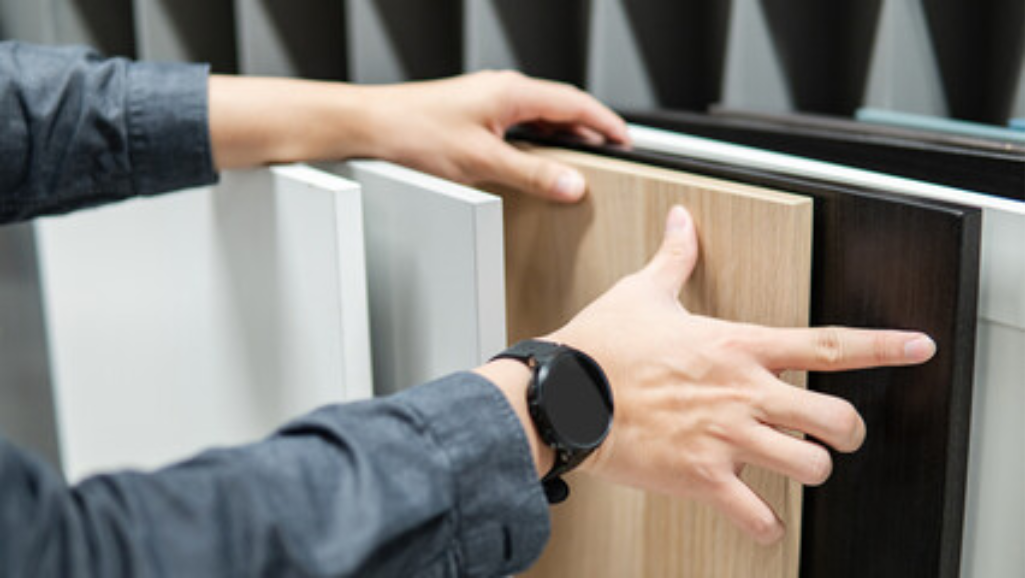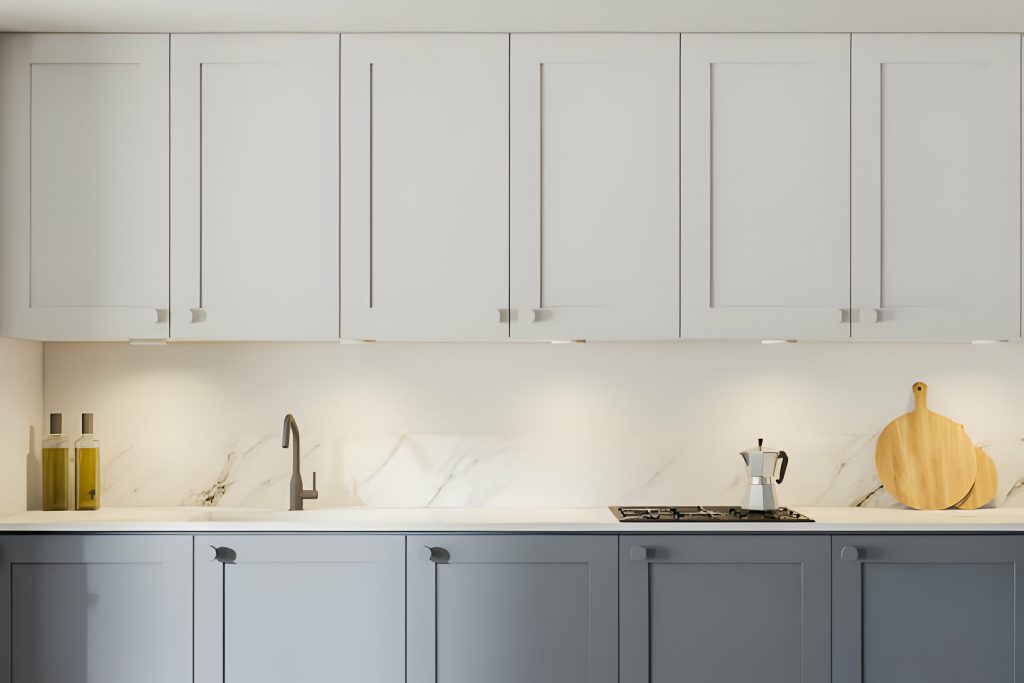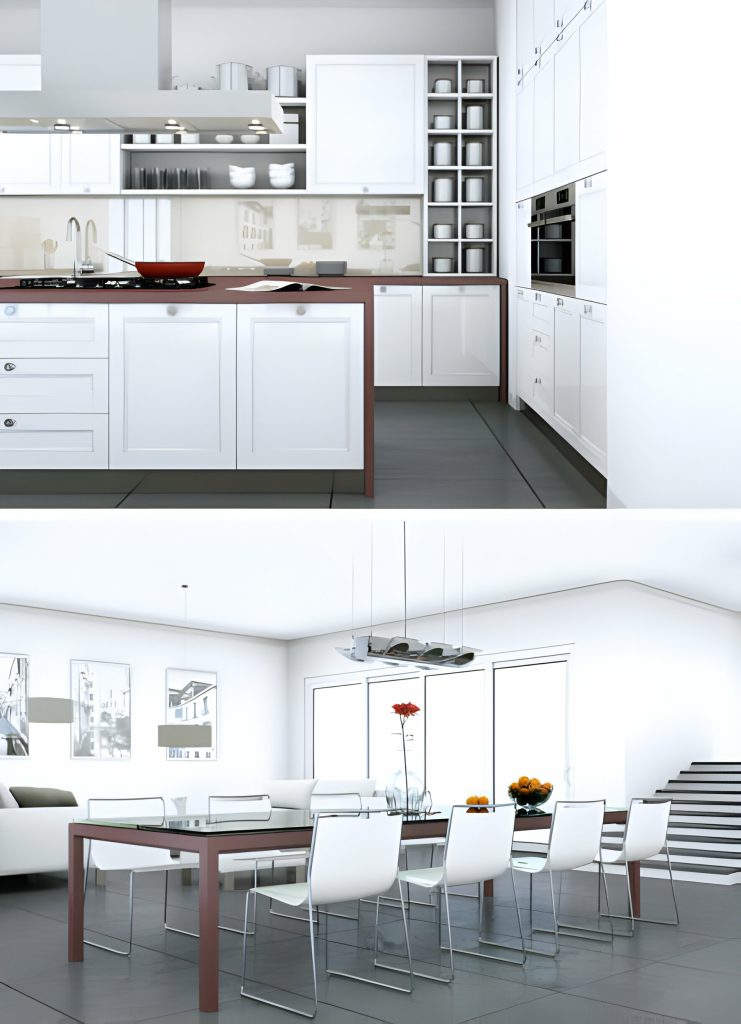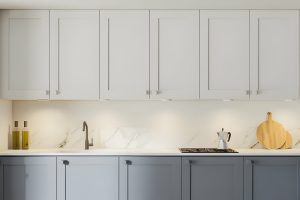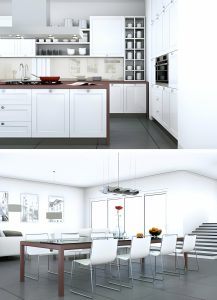Are you ready to upgrade your kitchen cabinets? In this article, we’ll show you how to hang kitchen cabinet doors with ease. You’ll learn the step-by-step process to measure and mark, attach hinges, hang the doors, and make adjustments for a perfect fit. With our detailed instructions, you’ll be able to achieve a professional-looking result in no time. Get ready to transform your kitchen with this simple DIY project!
Measuring and Marking
To begin measuring and marking for hanging your kitchen cabinet doors, grab a tape measure and carefully size up the height and width of each cabinet opening. Ensure you have the proper tools, such as a pencil and a level, to accurately mark the placement of the hinges and handles. Start by measuring the height of the cabinet opening from top to bottom. Take note of any irregularities or uneven surfaces that may affect the installation process. Next, measure the width of the opening from side to side, making sure to account for any trim or molding that may be present. Use the level to ensure that your measurements are straight and even. Once you have determined the correct measurements, mark the placement of the hinges and handles on the cabinet door, ensuring accuracy by double-checking your measurements. Remember to take into account any overlays or reveals that may be required for the specific style of cabinet door you are installing. By using the proper tools and ensuring accuracy in your measurements and markings, you can ensure a successful installation of your kitchen cabinet doors.
Attaching Hinges
Now that you have measured and marked the placement of the hinges on your kitchen cabinet doors, it’s time to attach them. The hinges are crucial for the proper functioning of your cabinet doors, as they allow them to open and close smoothly. There are different types of hinges available, each with its own unique features and installation requirements. To help you understand the options, here is a table outlining some common types of hinges and their characteristics:
| Hinge Type | Description | Installation Tips |
|---|---|---|
| Butt Hinge | Traditional hinge with two rectangular plates | Ensure plates are flush with the door and cabinet surfaces |
| Concealed Hinge | Hidden from view when the door is closed | Drill precise holes for the mounting plates |
| European Hinge | Self-closing hinge with a 165-degree opening angle | Use a template for accurate hole placement |
| Pivot Hinge | Allows the door to swing in both directions | Ensure the pivot point is aligned with the center of the door |
| Overlay Hinge | Partially visible when the door is closed | Position the hinge so that it aligns with the cabinet frame |
While attaching hinges, it’s important to troubleshoot common problems. If the door doesn’t close properly, check if the hinge is properly aligned or if the screws are tightened. If the door sags, try adjusting the hinges’ tension screws. If the door rubs against the frame, adjust the position of the hinges. By understanding the different types of hinges and troubleshooting common hinge problems, you can ensure that your kitchen cabinet doors function smoothly and contribute to the overall aesthetic of your kitchen.
Hanging the Cabinet Doors
Attach the hinges to the cabinet doors using a screwdriver, ensuring they are securely fastened. Once the hinges are attached, it’s time to hang the cabinet doors. Proper door alignment is essential for a smooth and functional cabinet system. To achieve this, start by positioning the door on top of the cabinet frame, making sure it is level and flush with the surrounding doors. Use shims if necessary to adjust the position.
Next, mark the locations for the door hardware on the cabinet frame. Choosing the right door hardware is crucial for both functionality and aesthetics. There are various types of hinges available, including concealed hinges, European hinges, and butt hinges. Consider factors such as door weight, door style, and desired opening angle when selecting the hardware.
Once you have marked the hardware locations, attach the hinges to the cabinet frame using a screwdriver. Double-check the alignment of the door before tightening the screws completely. Repeat the process for each cabinet door, ensuring consistent alignment throughout.
Proper door alignment and choosing the right door hardware are essential steps in hanging kitchen cabinet doors. By following these steps, you can achieve a professional-looking installation that functions smoothly and enhances the overall aesthetics of your kitchen.
Adjusting the Doors
Start by ensuring that the doors are properly aligned and adjusted for a smooth and functional cabinet system. Proper alignment is crucial for the doors to open and close correctly without any obstructions or gaps. To achieve this, you will need to make adjustments to the door hardware.
First, check the hinges to ensure they are securely fastened to both the cabinet and the door. Loose hinges can cause misalignment and result in uneven gaps or difficulty in opening and closing the doors. Tighten any loose screws and make sure the hinges are properly aligned.
Next, examine the door height. If the doors are not level, adjust the hinges to raise or lower the door accordingly. Use a screwdriver to loosen the hinge screws and reposition the door to the desired height. Once adjusted, tighten the screws to secure the door in place.
If the doors are not aligned horizontally, you can make adjustments using the hinge screws as well. Loosen the screws on the top or bottom hinge, depending on the direction you need to move the door. Gently push or pull the door until it is aligned properly, and then tighten the screws.
Lastly, check the gaps between the doors and the cabinet frames. If there are any uneven gaps, you can adjust the hinges to bring the door closer or further away from the frame. Tighten or loosen the screws as needed to achieve the desired gap consistency.
Finishing Touches
To complete the installation, you will need to add the finishing touches to ensure a polished and professional look for your kitchen cabinet doors. One important step is sanding the edges of the doors. This will create a smooth surface and remove any rough or uneven areas. Start by using a fine-grit sandpaper and carefully sand the edges in a circular motion. Be sure to sand all sides of the doors, including the top and bottom edges. After sanding, wipe away any dust or debris with a clean cloth.
The next step is choosing the hardware for your cabinet doors. This includes handles, knobs, or pulls. Consider the style and design of your kitchen when selecting the hardware. If you have a modern kitchen, sleek and minimalist hardware might be the best choice. For a more traditional or rustic look, consider hardware with decorative elements. Additionally, think about the finish of the hardware. You can choose from options like chrome, brass, or brushed nickel to complement the overall aesthetic of your kitchen.
